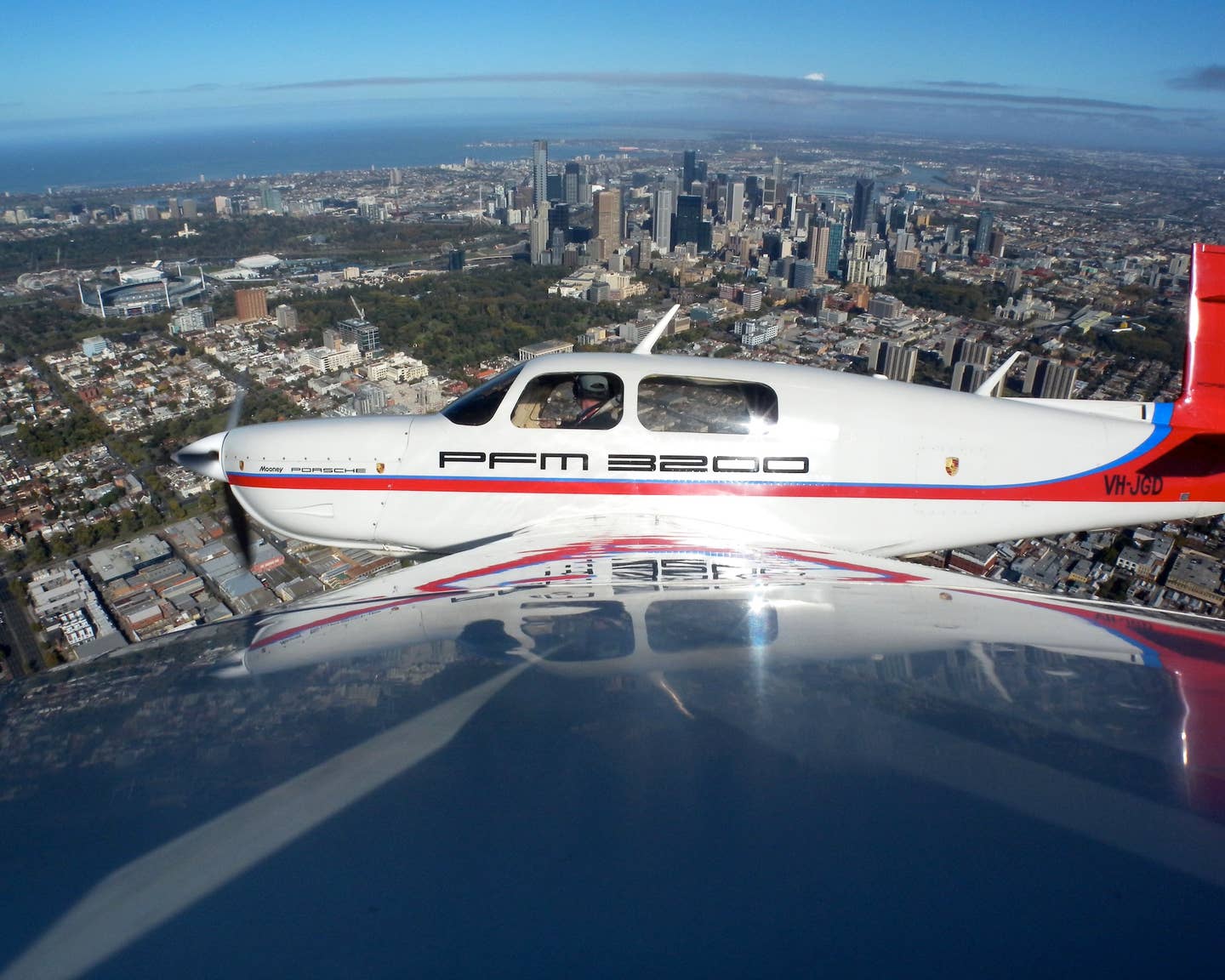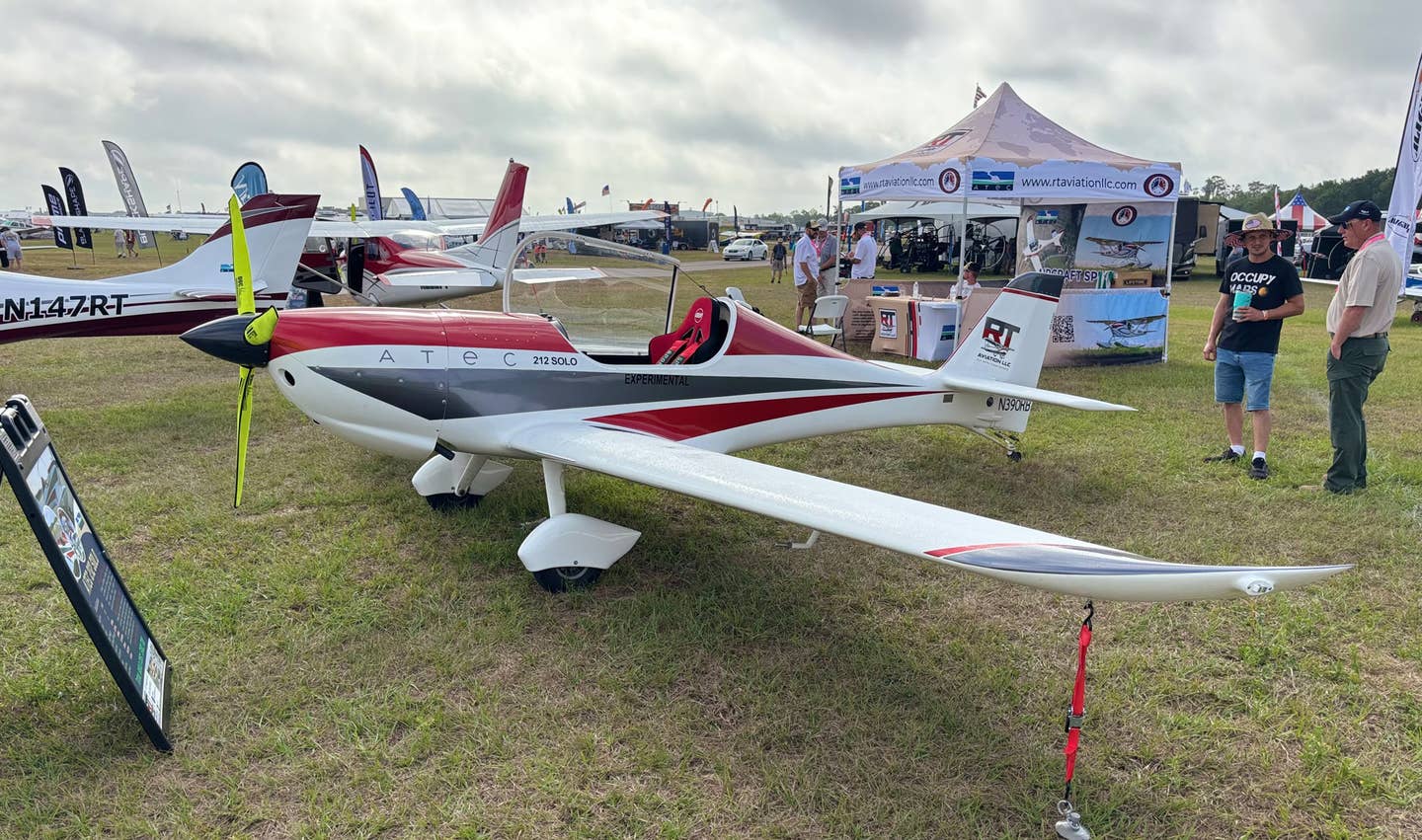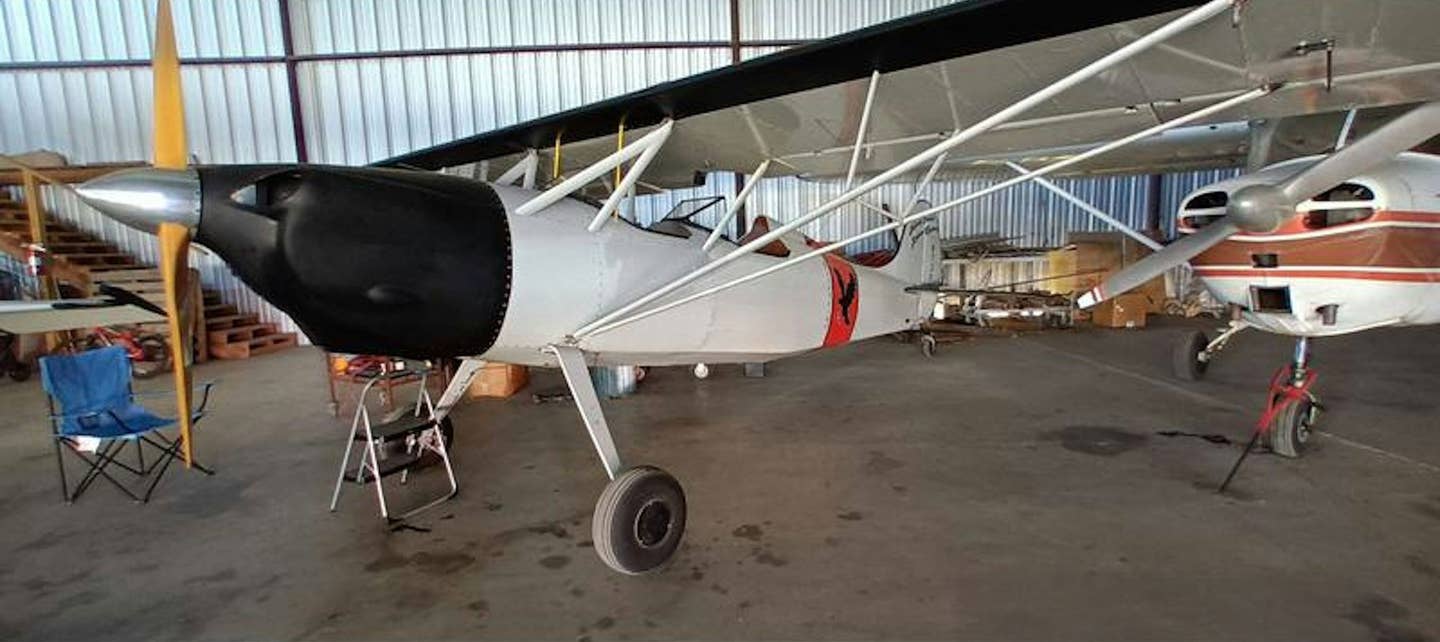This Incredible Plane: Mooney Porsche M20L PFM
The history of automotive-based powerplants in general aviation is not a great one. However, in the late 1980s, if anyone was determined to make it work, it was the engineering…

[Photo: Esther Buttery]
The history of automotive-based powerplants in general aviation is not a great one. However, in the late 1980s, if anyone was determined to make it work, it was the engineering talent at Porsche and Mooney.
Porsche, riding high on the sales success of its classic 911 and its domination of sports car racing, including the grueling 24 Hours of Le Mans, was looking to make a return to the aviation business. Mooney, which had much success marketing its Roy LoPresti-inspired 200-plus mph Mooney 201 and 231 models, was looking to create another marketing success. Just maybe the combination of these two-speed kings might produce the high-end product line anchor that Mooney needed and create the same kind of mystique that driving a Porsche 911 bestowed upon its owner.
Well, it was worth a try.
In the summer of 1981, Porsche decided to reenter the aviation market. Nearly 20 years earlier, it had adapted its classic boxer 4-cylinder engines, which began life in the back of countless Volkswagen Beetles, for small airplane builders and manufacturers. These Porsche 678 series engines measured just under 100 cubic inches and produced around 70 hp. Developed in the 1930s, about the same time as the initial air-cooled Lycoming and Continental 4-cylinder opposed engines, the little Porsche engine made the transition seamlessly into the engine compartment of many small homebuilt and limited production aircraft.
- READ MORE: This Incredible Plane: Bede BD-1
This time, Porsche was ready to get back into the general aviation market in a big way. The basis for its new GA powerplant was the race-tested, 6-cylinder, air-cooled boxer engine that powered the iconic Porsche 911. The Porsche-Flugmotoren (Porsche Flight Engine) PFM 3200 featured an air-cooled, 6-cylinder, opposed 3.2 liter (195 cubic inch) design. However, any similarity to other opposed aircraft engines of the time ended there.
The PFM 3200 featured a single-lever engine and propeller control, overhead cams, dual electronic ignition, automatic mixture control, racing-inspired dry sump lubrication, and a large belt-driven cooling fan at the rear to pull air through the cylinders. In order to squeeze nearly 217 hp out of this naturally aspirated engine, it operated at more than 5,000 rpm and required a reduction gearbox to bring the Hartzell composite propeller speeds down to a modest 2,300 rpm. The higher rpm provided greater smoothness, and based on Porsche racing experience, did not impact reliability.
This was a groundbreaking approach as the high-revving Rotax and diesel engines we now take for granted were still nearly 20 years over the horizon. And one more thing: The PFM 3200 featured tuned exhaust and mufflers that gave it a satisfying note, much like the expensive Porsche 911.
The PFM 3200 appeared experimentally in several light aircraft, but it fell to Mooney to mate it to its classic M20 line and place it in production. The Porsche engine demanded a newfound level of comfort and elegance that Mooney hoped would attract well-heeled auto enthusiasts to make the leap from fast cars to this sophisticated airplane. The result of its design efforts was the Mooney M20L PFM. The “L” stood for long fuselage, and this was in fact the first long fuselage Mooney. The stretch added nearly a foot to the rear seat and baggage compartment area, longer rear side windows, and a lengthened nose section to accommodate the Porsche’s six cylinders, geared propeller, and rear-mounted, belt-driven cooling fan. The final outcome was an especially elegant rendering of the original M20 design. The lengthened nose section features a single cowling opening located below the propeller hub and conspicuous Porsche lettering and the iconic logo on each side of the cowling.
Stepping down into the cockpit from the wing gave an intimate look at the flight deck. The panel featured turbine-style engine gauges mounted in vertical rows to the right of the pilot’s flight instruments. A single power lever rested on the center quadrant and was complemented by sculpted control yokes with the Mooney logo.
In case your passengers were not impressed yet, a Porsche emblem sat high on the center of the panel. Interior accommodations were equally luxurious with leather and high-end fabrics in all the right places. The entire package was stylish, had significant ramp appeal, just the right exhaust note, and exuded luxury, much like the high-end Cirrus and Beechcraft singles of today.
As you might expect, the advertising copy was equally glamorous, based on the slogan, “Mooney meets Porsche for the dawn of a new mystique.” Advertising images were sure to place a bright red or elegant silver Porsche 911, parked in the background, as these new upwardly mobile owners climbed into their even faster Mooney Porsche. So, with all of this product development, two very talented engineering companies, and the advertising machine working at full speed, what happened?
The good news is that the Mooney M20L PFM, performed as advertised. It was a smooth, reliable, well-heeled ride. It was arguably the most sophisticated GA aircraft of its day. On the other hand, the Porsche PFM 3200 was heavier and produced less power than the Continental and Lycoming engines it replaced, and the cooling drag from the fan-cooled engine was higher than expected. Thus, the performance of the Mooney Porsche was only average for the Mooney line with a 640 fpm rate of climb and a 166 knot advertised cruise speed. It certainly did not help that the GA market was in a significant decline by the end of the 1980s. And one more thing: Anyone could walk into a Porsche dealer and drive home in a shiny, new 911 that very afternoon. On the other hand, the Mooney Porsche purchase required time, training, and expense that might not have matched the mystique.
The Mooney Porsche debuted in the 1988 model year. Sadly, only 41 were produced by the time production ended in 1989. The PFM 3200 engine did not fare much better. Porsche produced around 80 of these sophisticated powerplants at a total development and production cost of nearly $1 million per engine. Little wonder that by 1991, Porsche had closed its aviation business again and returned to the more lucrative automotive market, where it found higher volume and continued success.
To its credit, Porsche continued to support the engine in a limited fashion until 2005, when it ceased all support. However, the FAA did not ground the airplane, noting that as long as spare parts were available, the engine could still be made airworthy.
Today several Mooney Porsches have been converted to more traditional firewall-forward powerplants by the Punta Gorda Modworks, and unfortunately, several more were destroyed awaiting conversion during Hurricane Charley in 2004. At least 10 loyal owners, who manage to find new or old stock parts, still proudly fly their airplanes. Oh, and their images online usually include a beautiful Porsche 911 lurking in the background.
The general aviation business is not an easy one to crack, but you have to give Mooney and Porsche credit for designing such an elegant, sophisticated, and incredible plane.
Editor's Note: This story originally appeared in the October 2023 issue of Plane & Pilot magazine.

Subscribe to Our Newsletter
Get the latest Plane & Pilot Magazine stories delivered directly to your inbox






